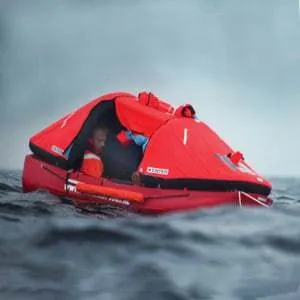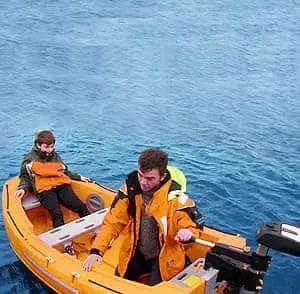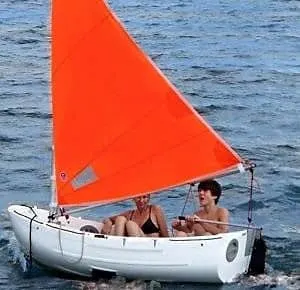
If you’ve perused West Marine’s dinghy section or searched for a used dinghy for sale on craigslist, you’ve probably realized that there are an overwhelming number of styles, makes, and materials. If you’ve seen the price tags you probably feel even more “deflated”.
I know the frustrations of dinghy shopping because we underwent our own dinghy drama. Just before making a 26-day Pacific crossing, we were horrified to realize that panels were peeling off our old PVC inflatable. It had melted in the Mexico sun and we were a patch a way from inadvertently sinking to the bottom of the Puerto Vallarta harbor.
Faced with a $5,000 US price tag for a new inflatable, we found ourselves researching every dinghy under the sun. We ultimately had to question what defines a dinghy in the first place and what we really needed it to do (at that point I was about ready to paddle to shore on a giant piece of Styrofoam!). In our research we found plenty of low cost options and ultimately spent $500 on a new tender that saw us 10,000 miles across the Pacific and beyond.
The BIG lesson we learned? Don’t feel limited to inflatables – the most popular (and expensive) option.
So, to simplify things, let’s start with the basics of what you need your dinghy to do.
DINGHY definition
Simply put, a dinghy is a small boat (2-6 m or 6-20 ft.), often carried or towed by a larger boat. Generally the dinghy is used as a recreational tender to travel back and forth from shore or to places that a larger vessel is unable to navigate. What’s the difference between a dinghy and a tender? A dinghy is small (under 6m or 20 ft.) whereas a tender could be a vessel of any size that moves people or supplies on or off a larger ship. The most popular dinghies include inflatables, sailing dinghies, rowboats, and kayaks – but there are literally endless options! If you wanted, you could build yourself a coconut raft and call it a tender!
HOW MUCH DOES A DINGHY COST?
A recreational dinghy could cost anywhere from $500 to $15,000 dollars (or more!). It all depends on what you want but the biggest cost drivers will be material and whether you choose to have an outboard motor (or not).
TYPES OF DINGHIES
Here are the main dinghy types and the pros, cons, and considerations you should take into account when dinghy boat shopping.
INFLATABLE DINGHY ($1,500-$5,000 + OUTBOARD MOTOR $700-$3,000)
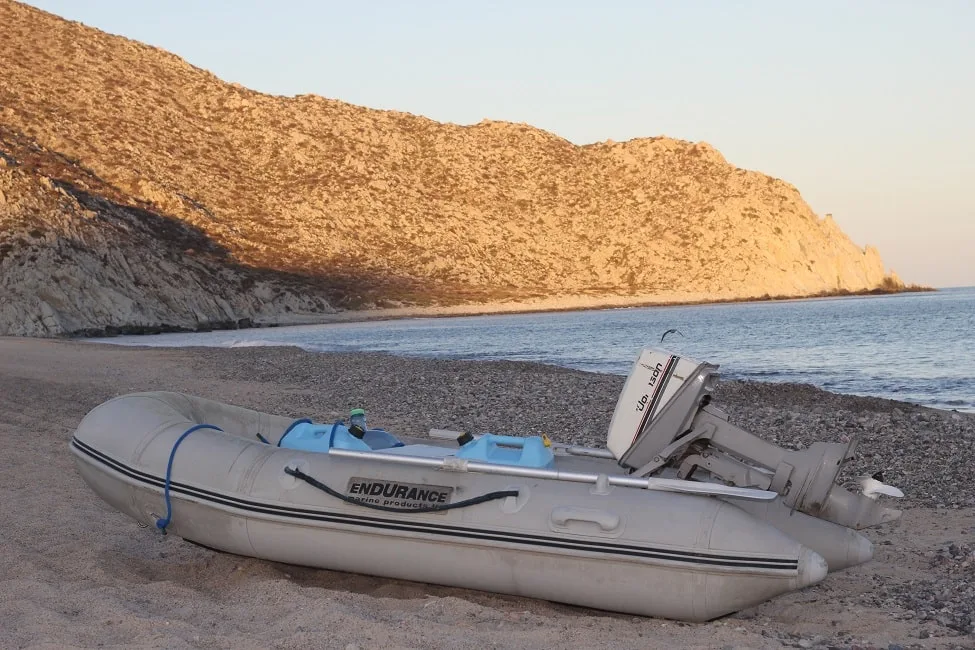
If you plan on dragging your inflatable up the beach consider getting one with a rigid bottom
PROS:
Speed
Nothing is going to get you from A to B as quickly as an inflatable dinghy with an outboard motor.
Comfort
The buoyancy of inflatables also makes them a comfortable ride; they are more stable and keep you dryer than something with lower freeboard like a kayak or stand-up paddle board. If you live in a colder climate (where you won’t dry out quickly if you get wet), inflatable boats are well worth the investment.
Capacity
They’re little work horses and can carry a lot of people, pets, and groceries.
Towing ability
They’ll also get you out of a pinch (e.g. if your sailboat is drifting towards the rocks) as you can tow your mother ship with an inflatable dinghy. I’ve watched several 35-50 ft sailing yachts towed to port by small inflatables with 9.9 hp motors.
Bling
If you’re looking for luxury, higher-end inflatable boats come with lots of features like steering consoles, windshields, stainless steel handrails, red and green navigation lights, and bow lights.
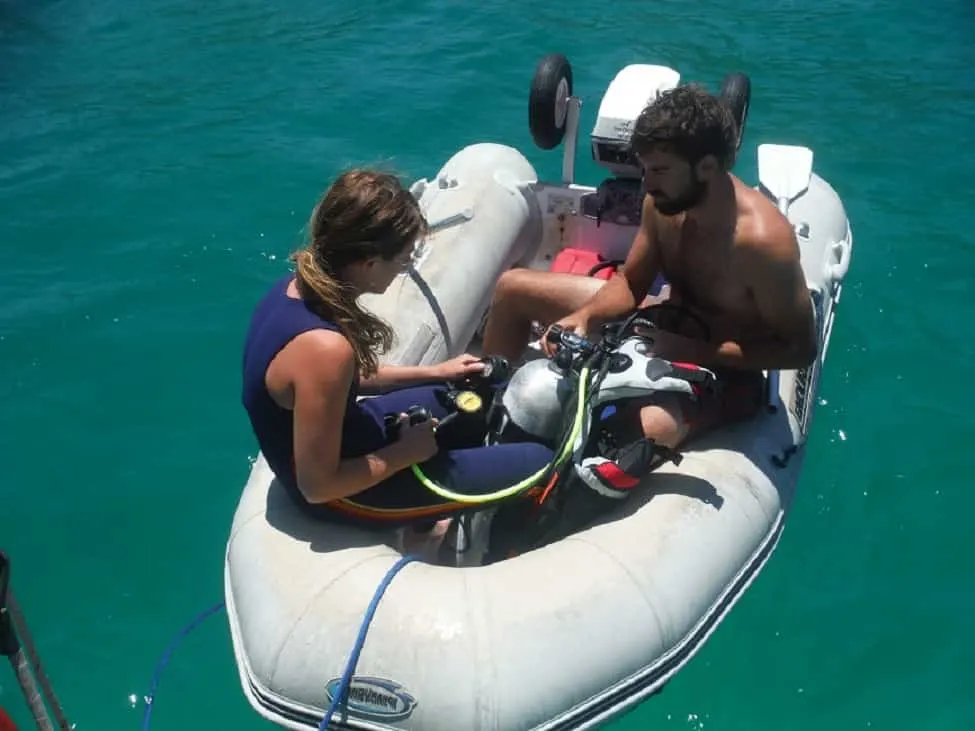
Before our inflatable dinghy bit the dust, it was great for snorkeling and diving
CONS:
More costly
Inflatables can be quite expensive. In addition to the cost of the inflatable dinghy you’ll have to buy an outboard as they aren’t the best for rowing. Outboards are expensive to maintain and run. You’ll also want to buy dinghy chaps and a cover to protect the PVC or Hypalon. If you don’t mind a bit of exercise a rowing dinghy, sailing dinghy, kayak or paddle board are all less expensive (and often overlooked) ways of getting to shore. Fibreglass or hard plastic construction also tend to cost less and last a lot longer.
Require storage space
If you opt for an outboard you’ll have to transport and store fuel and spare parts onboard.
Less durable
Inflatable dinghies are constructed, primarily, of Hypalon or PVC. If you’re looking for the best inflatable dinghy, go with Hypalon. It will stand up in hot climates and last longer. If you’d like to save money and plan on boating north of 40, a PVC dinghy will be fine. You also have the option of an inflatable dinghy with an air-floor or a rigid-floor. If you plan to make a lot of beach landings, go with a more durable rigid-floor as it will fare far better on rocky beaches than an air-floor (which is liable to puncture). If you plan to make dock landings only (or very careful sandy beach landings) you can get away with an air-floor.
HARD DINGHY ($700-$1,500)
PROS:
Durable
A hard dinghy is tough as nails! Constructed from fiberglass you can bump coral, grind up rocky beaches, make the odd crash landing and your hard dinghy won’t mind a bit.
Less costly
They cost less to maintain and last a lot longer than inflatables. If you’re really thrifty you can even build your own with one of these kits.
CONS:
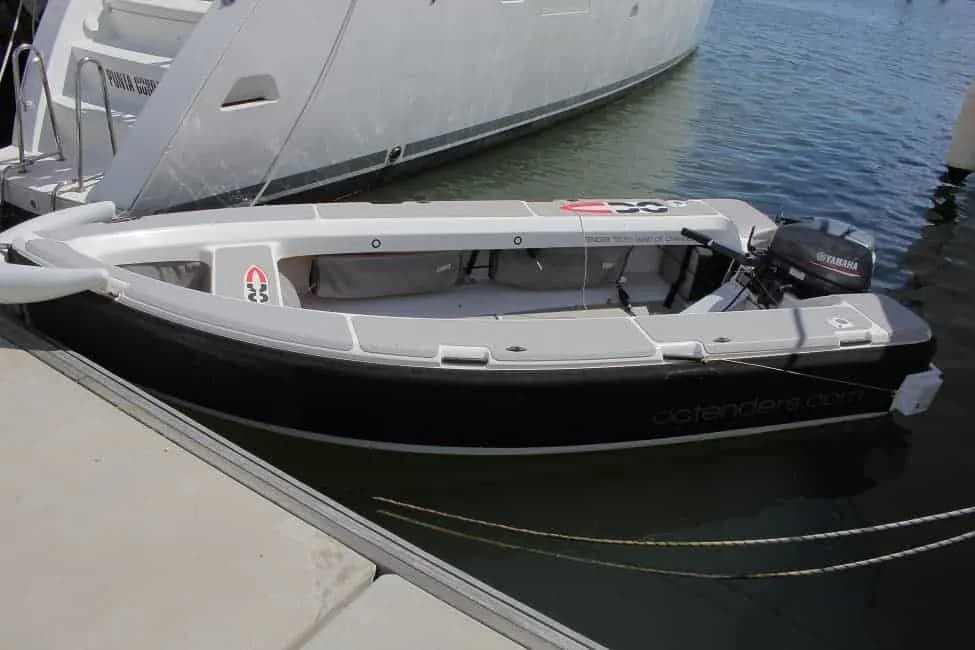
Looking for high performance? I’ve met a few cruisers with these new generation ultra light weight planing hulls made by Octender
Heavy
Hard bottom dinghies are much heavier than inflatables (though those can weigh a fair bit too). Consider what you can easily launch, drag up the beach, or otherwise move. If you make a lot of beach landings with a heavy dinghy you may want to invest in dinghy wheels. You may also want to invest in a dinghy lift (or dinghy davits) for hauling the dinghy in and out of the water.
Slow
If you’re rowing a hard dinghy you will be slower than an inflatable with an outboard (unless of course, you’re Mark Slats). Though you can attach an outboard to a hard dinghy, their hulls are designed for rowing and not for planing, so you’re not going to win any races.
The exception to this is, Octender, a new generation ultra-light and durable hard dingy with a planing hull (pictured on the right), which is an option if you have a big budget to play with.
SAILING DINGHY ($1,800-$5,000)
PROS:
Versatile
Sailing dinghies like the Portland Pudgy and Walker Bay can be sailed, rowed, or powered to your destination. The ultimate in versatility, they can be a commuter, a toy, or in the case of the Pudgy, a liferaft…depending on what you’re doing that day (hopefully not getting lost at sea).
Rugged
Their fiberglass or hard plastic construction make them rugged and long lasting.
Fun
Because they can be sailed single-handed, they’re a great boat for kids to learn on.
CONS:
Expensive
A boat with so many options comes with a price tag, but then again if you were planning on buying a liferaft and a dinghy, an option like the Portland Pudgy (which can double as both) might actually save you a few bucks.
Clutter
The other downside to sailing dinghies is that the additional gear takes up scarce storage space on board.
KAYAKS AND CANOES ($500-$1,200)
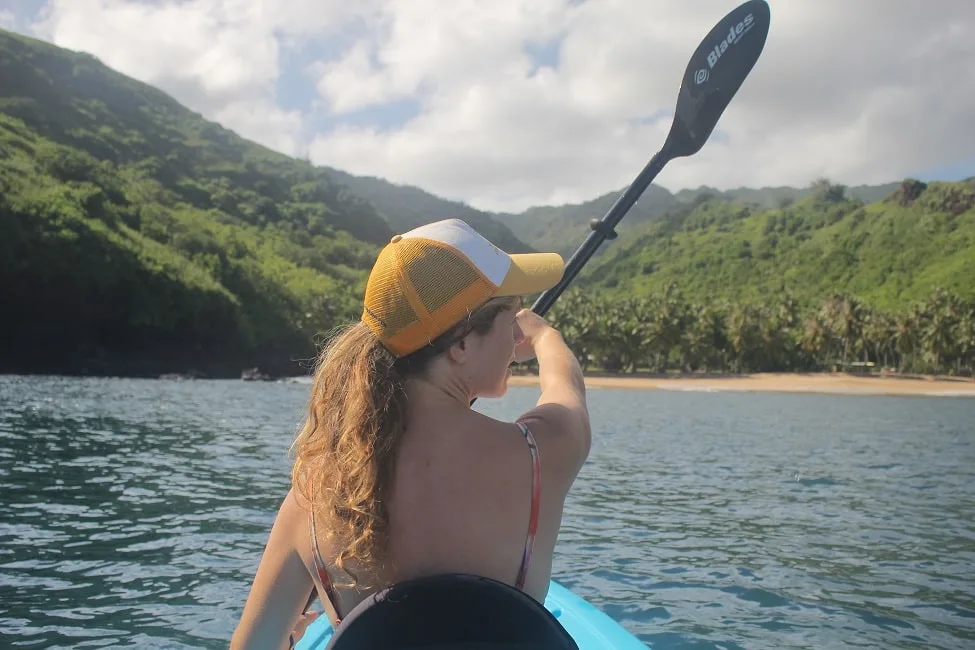
To shore…
When we lost our PVC dinghy in Mexico and were faced with a replacement cost of $5,000 US, we ultimately decided to buy a new sit-on-top kayak from Costco. Of course we had our concerns. How would we get groceries back and forth? What if we got stuck in big conditions and couldn’t paddle our way out of it? Well, after 10,000 miles across the Pacific we never once had a problem. We’ve also heard of sailors swearing by inflatable canoes.
PROS:
Inexpensive
Costing one tenth the price of an inflatable dinghy, a hard plastic Kayak will get the job done and stand up to the rockiest of beach landings.
Lightweight
They’re also considerably lighter and can be easily hauled on and off board.
Rugged
If anything our kayak allowed us to access more remote places and make landings that would be impossible in an inflatable. It was surprisingly adept at carrying large quantities of groceries when we were provisioning and we found we could handle poor sea conditions just as well as our fellow cruisers in inflatables.
Exercise and adventure
Our kayak also had the added bonus of transforming daily commutes into good exercise and often magical experiences. There were many nights where we serenely paddled back from an evening-out under a spectacular full moon..
CONS:
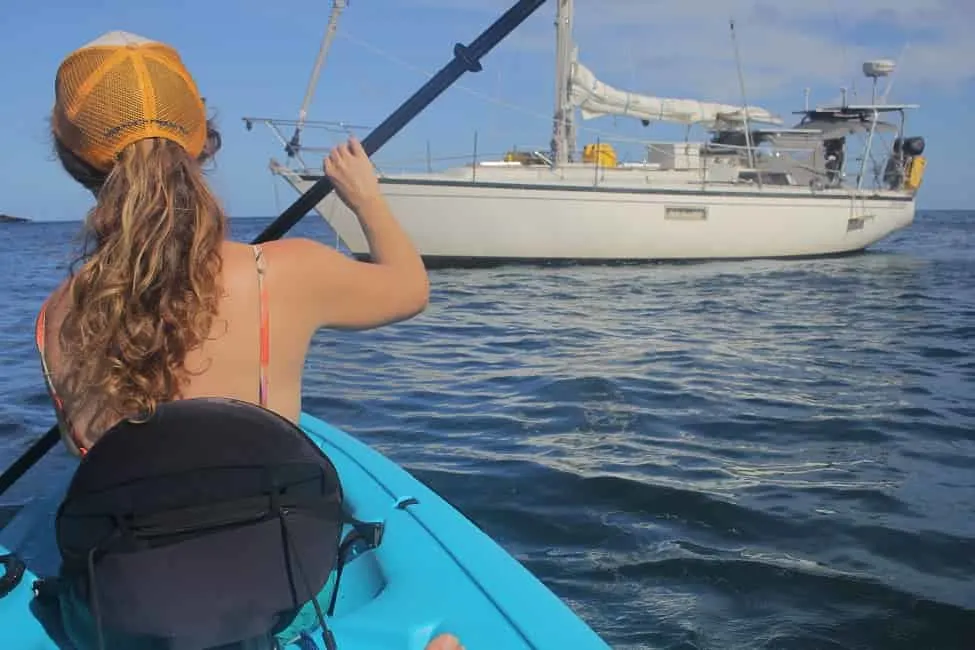
…and back! Our kayak was the perfect low cost dinghy.
Low capacity
The downside to our kayak was that we couldn’t give other people rides, and it was more difficult to transport large awkward items like suitcases (though no problem for groceries and fuel jugs).
Uncomfortable
We also had perpetually wet bums (which would have been untenable had we been in a cold climate). We also became experts at anchoring in shallow waters to cut down on our time paddling to shore. Despite the cons, we’d use a kayak as our primary tender on a long offshore adventure again in a heart beat.
PADDLEBOARDS (A LITTLE FUN ON THE SIDE?)
It seems that just about every cruising boat has a paddle board hanging off the side these days. While I wouldn’t take one as a primary dinghy, a paddle board is a great way to give individuals a bit more freedom to get on and off the boat as they please. That way anyone left on board isn’t stranded without a means of getting to shore.
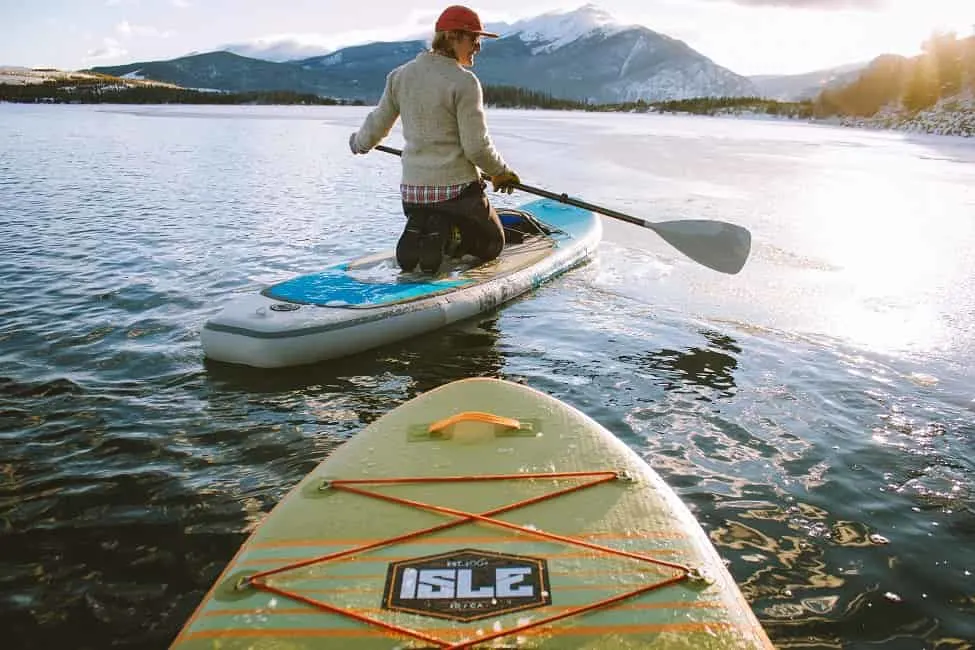
BEFORE YOU HIT THE STORE
Before you buy, you’ll need to know the following things:
The dimensions of your storage space
Where will you store your dinghy while underway? Measure the dimensions of this space as it will inform the size of dinghy you purchase. While some boat designs have plenty of deck space and even dinghy davits, many are fairly limited when it comes to places for stowing a dinghy. If you’re tight on space, an inflatable, folding or nesting dinghy is a good option.
Capacity requirements
How many people will you be shuttling back and forth. While an 8-footer is great for two, you’ll want 9 feet or longer if you have kids, pets, etc.
The best dinghy is the one that meets your requirements, fits your budget, and gets you to your next adventure. So, don’t be afraid to think outside the box and happy shopping!
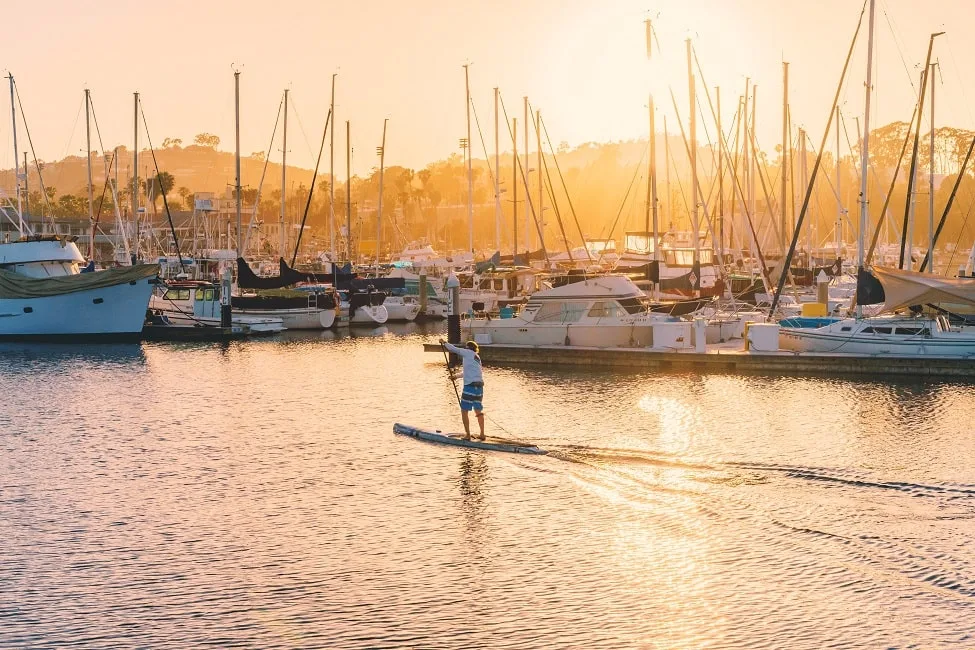
Fiona McGlynn is an award-winning boating writer who created Waterborne as a place to learn about living aboard and traveling the world by sailboat. She has written for boating magazines including BoatUS, SAIL, Cruising World, and Good Old Boat. She’s also a contributing editor at Good Old Boat and BoatUS Magazine. In 2017, Fiona and her husband completed a 3-year, 13,000-mile voyage from Vancouver to Mexico to Australia on their 35-foot sailboat.


